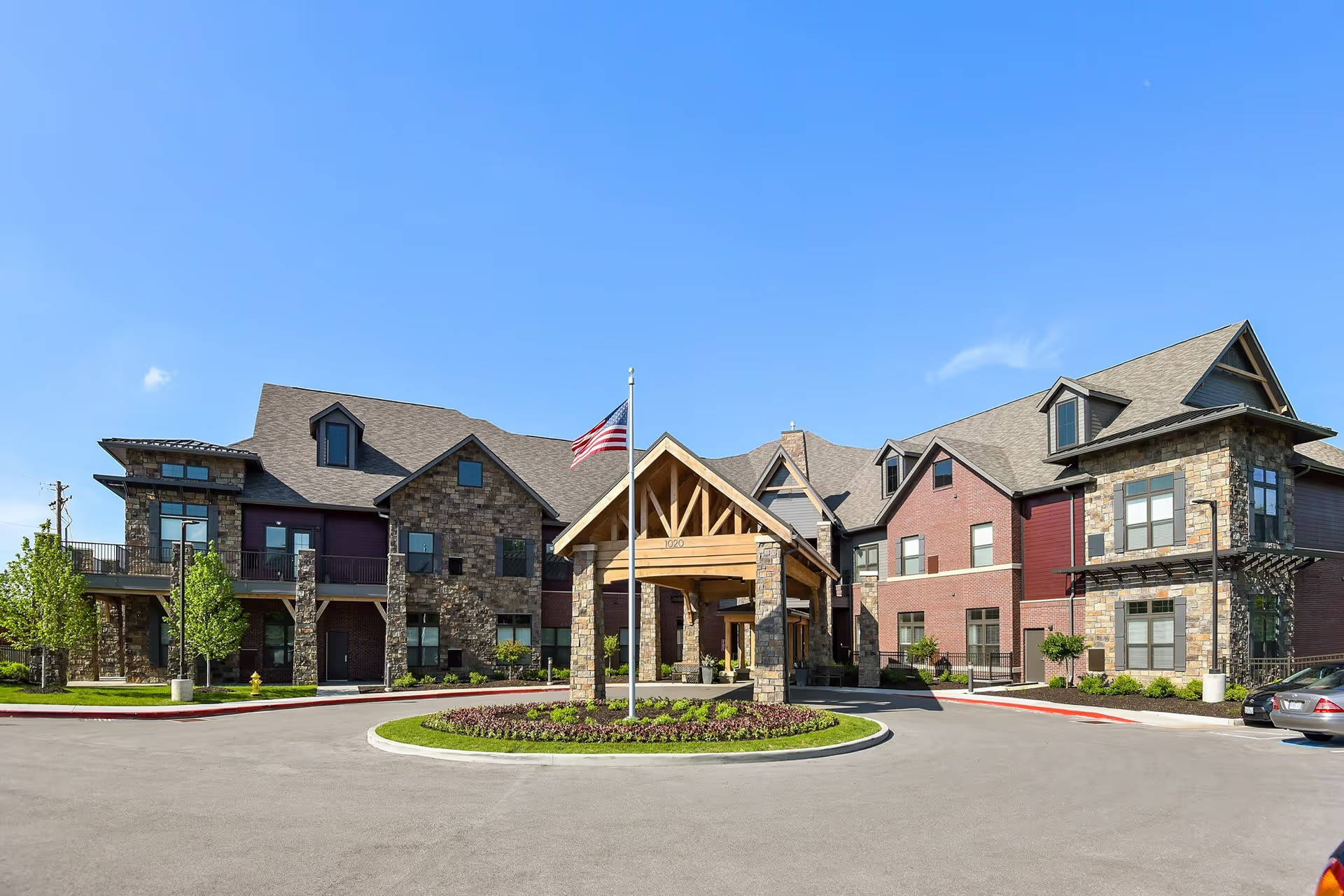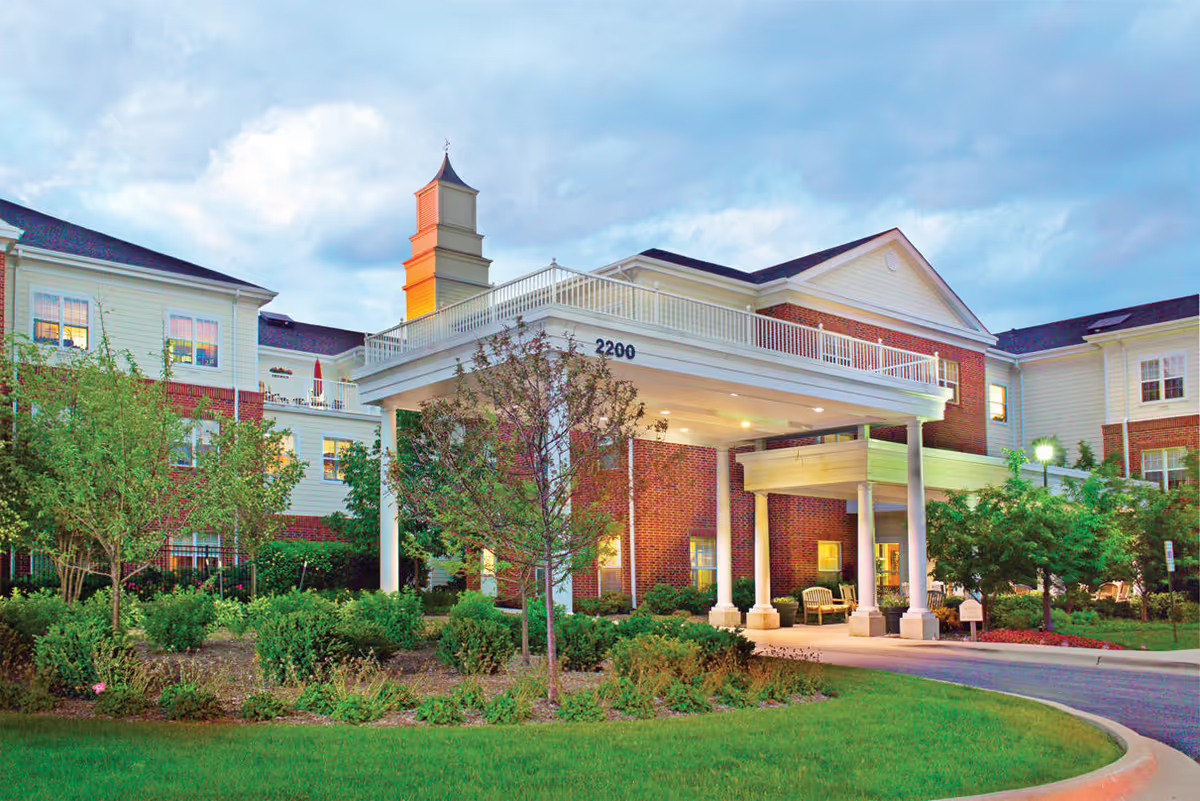Overall sentiment about The Landing of O'Fallon is mixed but leans positive when reviewers emphasize staff compassion, the breadth of activities, and the attractive, newer facility. Many family members and residents praise direct-care staff, describing aides and nurses as friendly, attentive, and personable — greeting residents by name, providing emotional support, and going above and beyond routine tasks. Multiple reviewers called out particular staff members and the activity director for exceptional engagement. The physical plant is consistently described as new, clean, bright, and cheery, with apartment-style rooms, well-kept grounds, safety features like grab bars, and amenities such as a chapel, exercise room, library, and transportation and therapy services. Many families reported good move-in experiences, accommodating admissions staff, and an overall “home-like” atmosphere that supports personalization of rooms and family involvement.
Activities and social programming are a strong, recurring positive. Reviews list a wide variety of daily and weekly offerings: movie nights, Manicure Mondays, poker and games, Wii bowling, corn hole, happy hours, afternoon tea, exercise classes, weekly entertainers, outings (library, Butterfly House), bunco, intergenerational and pet visits, and many themed parties and family nights. The activity director is frequently commended for keeping residents busy and engaged; photos and anecdotes about active participation, music and movie engagement, and enrichment events appear across reviews. For families seeking a socially active community, The Landing often meets or exceeds expectations.
Despite these strengths, a number of serious and recurring concerns appear in the reviews and temper the overall impression. The most frequent operational issue is inconsistent staffing and high turnover among aides and nursing staff. Several reviewers report inadequate staffing levels — one specific claim noted just 2–3 staff for 54 memory-care residents on nights — and others describe slower buzzer responses on night shifts or weekends. This inconsistency is linked by some families to declines in care quality over time: delayed responses, missed or poor medication administration, and lapses in routine hygiene and monitoring. High aide turnover and variable staff quality lead to markedly different experiences depending on the day and shift.
Memory-care and hygiene issues are a recurrent and serious theme in multiple reviews. While some accounts praise patient and compassionate memory-care staff, others describe unacceptable situations: residents found in soiled clothing or urinated at tables without timely cleanup, urine odor in areas, and lost laundry. These incidents contribute to safety and dignity concerns for families of memory-impaired residents. In at least one case reviewers reported an assault between residents that led to an ER visit and a contested management response; other families described management as unresponsive or dismissive when asked to re-evaluate placement or safety measures. These safety and hygiene reports are significant red flags and stand in contrast to other reviewers who felt their memory-care loved ones were thriving.
Dining and food quality show mixed feedback. Many reviewers say the meals are delicious, with good variety and accommodating options; others report limited menus, poor or inconsistent preparation, and high meal costs. Several reviews indicate the dining experience has improved (residents now eat in the dining room more often), while others still cite dissatisfaction. Housekeeping and ancillary services also draw mixed reviews: many praise regular room cleaning, weekly sheet changes, and responsive maintenance, but a subset experienced lost laundry, dusting gaps, or initial intake process kinks.
Management and communication are polarizing themes. Some families describe proactive, empathetic management that responds quickly to concerns, communicates health changes, and resolves billing issues. Conversely, other reviewers recount rude upper management, hard sales pressure at move-in, poor follow-up, mishandled billing (including a reported charge after a resident’s death), and cold or unsympathetic responses. Medication administration and documentation inconsistencies, as well as variable follow-through on incident reporting, were specifically highlighted. These mixed accounts suggest that the experience can depend heavily on which administrators and staff are in place at a given time.
There are additional operational notes prospective families should weigh: the community layout affects some residents negatively (long hallways and distance from dining can confuse certain residents), weekend staffing can be lighter, assisted-living and memory-care staffing patterns may differ (some reports stated memory care staffing was more consistent than assisted living), and initial impressions from sales tours do not always match lived experience according to a few reviewers. On the positive side, many reviewers reported excellent outcomes: residents flourishing, strong family engagement, active programming, supportive admissions staff, and a fair value proposition for certain unit types.
In summary, The Landing of O'Fallon offers a modern, attractive environment with a robust slate of activities and many caring, personable staff members who can create an engaging, family-like atmosphere. However, there are repeated and significant concerns around staffing consistency, memory-care hygiene and safety incidents, management responsiveness, and variability in dining and clinical care. Prospective residents and families should strongly consider an in-person visit, ask specific questions about current staffing ratios (including night and weekend coverage), turnover rates, memory-care staffing and hygiene protocols, incident response and reporting practices, medication administration procedures, and billing policies (including charges after discharge or death). Checking recent state inspection reports and requesting references from current resident families may also help clarify how recent leadership and staffing changes are affecting day-to-day care.







